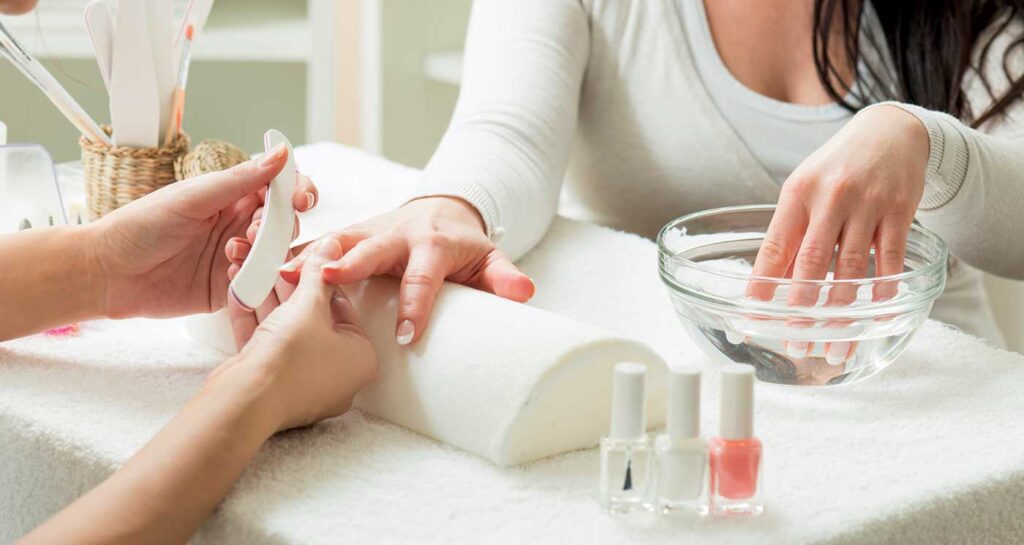Are you curious about what treatments are included in a spa manicure? Look no further! At Centre of Wellness, we offer a range of Beauty Training Courses that provide you with comprehensive knowledge about spa manicures, among other beauty treatments. From exfoliating and moisturizing to cuticle care and nail polishing, our courses cover it all. Whether you are a beauty professional looking to expand your skill set or someone who simply wants to pamper yourself, our courses are designed to meet your needs. Discover the secrets behind a luxurious spa manicure and enhance your beauty skills today. Visit https://beautytrainingcoursesonline.com/courses-overview/ for more information.
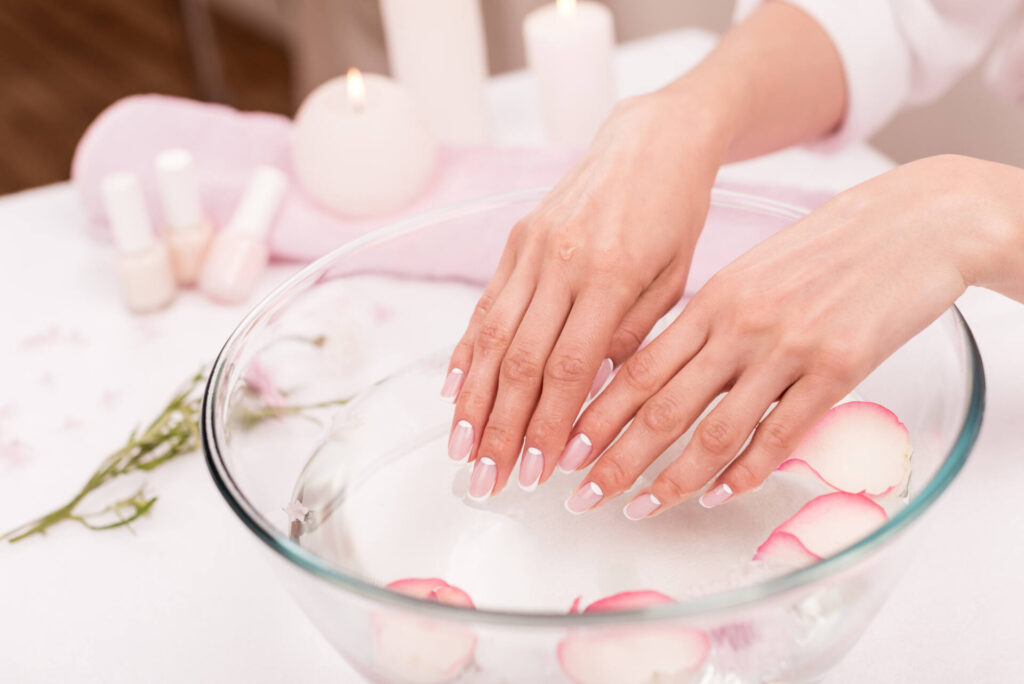
This image is property of www.gemmaetc.com.
1. Nail Shaping
The first step in a spa manicure is nail shaping. This is where your nails are filed and shaped to your desired length and style. Whether you prefer a square shape or a rounded shape, the nail technician will carefully shape your nails to ensure they look their best. Nail shaping is an essential part of a spa manicure as it helps create a polished and well-groomed appearance for your nails.
2. Cuticle Care
Next comes cuticle care, which is crucial for healthy and beautiful nails. The cuticles are the thin layer of skin that surrounds the base of your nails. It is essential to keep them well-maintained to prevent hangnails and other nail issues. During a spa manicure, the technician will gently push back your cuticles using a cuticle pusher, or in some cases, they may choose to trim any excess cuticles. This process helps to clean up the nail bed and create a neat canvas for the rest of the manicure.
3. Hand Exfoliation
Hand exfoliation is a vital step in a spa manicure as it helps remove dead skin cells and reveals smoother, more radiant skin. There are two types of hand exfoliation commonly used in spa manicures: physical exfoliation and chemical exfoliation.
3.1 Physical Exfoliation
Physical exfoliation involves using a scrub or exfoliating cream to massage your hands and remove dead skin cells. The technician will gently rub the scrub onto your hands in circular motions, paying special attention to areas such as the knuckles and the back of the hands. This process not only removes dry and rough skin but also improves blood circulation, leaving your hands feeling soft and rejuvenated.
3.2 Chemical Exfoliation
Another method of hand exfoliation is chemical exfoliation. This involves using products that contain mild acids, such as alpha hydroxy acids (AHAs), to dissolve dead skin cells. The technician will apply a chemical exfoliant to your hands and leave it on for a few minutes to allow it to work its magic. Afterward, they will rinse it off, revealing fresh and smooth skin. Chemical exfoliation is particularly beneficial for those with sensitive skin or for those who prefer a gentler exfoliation option.
4. Hand Massage
Once your hands have been exfoliated, it’s time for a relaxing hand massage. The hand massage is one of the most enjoyable parts of a spa manicure as it helps relieve tension and promotes relaxation. The technician will use a moisturizing oil or lotion to massage your hands, starting from the fingertips and working their way up to the wrists. The rhythmic motions of the massage help improve circulation, reduce muscle soreness, and enhance the overall well-being of your hands.
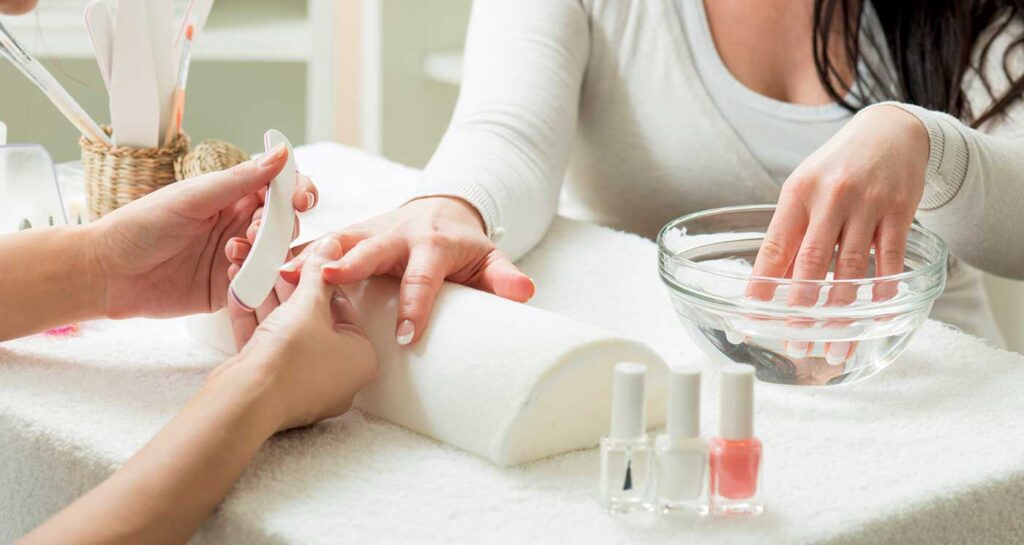
This image is property of goodspaguide.co.uk.
5. Moisturizing Treatment
After the hand massage, your hands will be treated to a moisturizing treatment. This step is crucial for maintaining soft and hydrated skin. The technician will apply a nourishing hand cream or lotion all over your hands, paying close attention to the cuticles and any dry areas. They may also use a warm towel wrap to enhance the absorption of the moisturizer, leaving your hands feeling incredibly smooth and supple.
6. Nail Buffing
Nail buffing is the next step in a spa manicure, and it helps give your nails a beautiful natural shine. The technician will use a nail buffer to gently polish the surface of your nails, removing any ridges or imperfections. This process not only smooths out the nails but also promotes healthy nail growth. Nail buffing is especially beneficial for those who prefer a more natural look or for those who want to give their nails a break from nail polish.
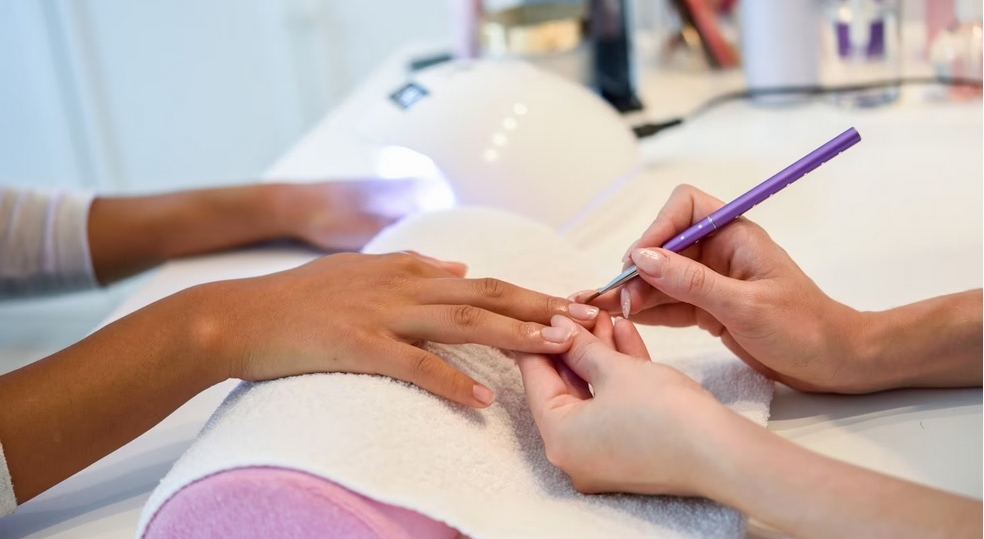
This image is property of cdn.statically.io.
7. Nail Polish Application
If you choose to have nail polish applied during your spa manicure, this is the step where it happens. The technician will start by applying a base coat to protect and strengthen your nails. Once the base coat is dry, they will apply your chosen nail polish color in thin, even coats. After each coat, they will use a blow dryer or a small fan to speed up the drying process. Once the color is applied, they will finish off with a top coat to seal in the polish and give your nails a glossy finish.
8. Paraffin Wax Treatment
Paraffin wax treatment is a luxurious addition to a spa manicure that provides intense hydration and nourishment to your hands. The technician will dip your hands into a warm, melted paraffin wax mixture and then wrap them in plastic or place them in special mitts. The warm wax helps open up the pores and allows the moisturizing properties to penetrate deeply into your skin. After a few minutes, the technician will remove the wax, leaving your hands feeling incredibly soft and moisturized.
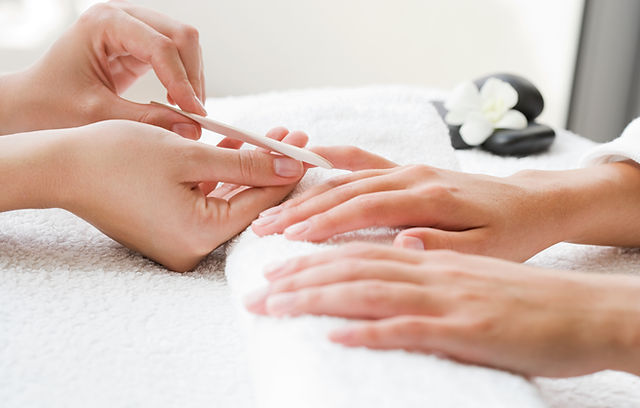
This image is property of static.wixstatic.com.
9. Hot Towel Wrap
In addition to the paraffin wax treatment, some spa manicures also include a hot towel wrap. This step helps lock in moisture and further enhance relaxation. The technician will wrap your hands in warm, damp towels, allowing the heat to soothe your muscles and open up your pores. The hot towel wrap not only feels incredibly comforting but also helps the moisturizing products penetrate deeper into your skin, maximizing their effectiveness.
10. Arm and Hand Mask
To complete your spa manicure, some treatments include an arm and hand mask. This step provides additional nourishment and hydration to the skin, leaving your hands feeling rejuvenated and revitalized. There are two types of masks commonly used in spa manicures: clay masks and hydrating masks.
10.1 Clay Mask
Clay masks are known for their purifying and detoxifying properties. The technician will apply a thin layer of clay mask to your hands and arms, allowing it to dry and harden. As the mask dries, it draws out impurities and toxins from your skin, leaving it clean and refreshed. Once the mask is dry, the technician will gently remove it, revealing softer and brighter skin.
10.2 Hydrating Mask
On the other hand, hydrating masks focus on moisturizing and nourishing the skin. The technician will apply a creamy hydrating mask to your hands and arms, ensuring complete coverage. This mask is rich in vitamins and nutrients that deeply penetrate the skin, restoring moisture and promoting a youthful appearance. After a few minutes, the mask is gently wiped off, revealing hydrated and radiant skin.
In conclusion, a spa manicure is a comprehensive treatment that not only enhances the appearance of your nails but also provides relaxation, hydration, and rejuvenation to your hands and arms. From nail shaping to cuticle care, hand exfoliation to nail polish application, each step is carefully designed to elevate your nail care experience. So, treat yourself to a spa manicure and indulge in the ultimate pampering session for your hands.

